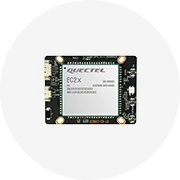Synchronous Dynamic Random Access Memory: An Overview
Synchronous Dynamic Random Access Memory (SDRAM) is a high-performance memory technology that has revolutionized data access in computing systems. SDRAM synchronizes the operation of memory with the processor's bus clock, allowing for faster data transfer rates and improved overall system performance. It is the backbone of modern computing, enabling devices from desktops to smartphones to operate efficiently.
Types of Synchronous Dynamic Random Access Memory
There are several types of SDRAM, each catering to different performance and usage needs:
- DDR SDRAM (Double Data Rate): This type can transfer data on both the rising and falling edges of the clock cycle, effectively doubling the transfer rate compared to traditional SDRAM.
- DDR2 SDRAM: An evolution of DDR, this version offers higher bandwidth and lower power consumption, making it suitable for energy-efficient applications.
- DDR3 SDRAM: Further enhancing speed and efficiency, DDR3 significantly increases memory bandwidth while minimizing power usage, ideal for high-performance computing scenarios.
- DDR4 SDRAM: The latest mainstream variant, DDR4 provides higher speeds and capacity options along with better energy efficiency compared to its predecessors.
Applications of Synchronous Dynamic Random Access Memory
SDRAM is utilized across a variety of devices and applications, highlighting its versatility:
- Computers and Laptops: SDRAM is commonly used in personal computers and laptops, providing the necessary speed for processing tasks and running applications.
- Gaming Consoles: High-performance gaming consoles require fast memory to process graphics and game data efficiently, relying heavily on DDR variations of SDRAM.
- Smartphones and Tablets: Mobile devices utilize SDRAM to streamline performance while managing multiple applications and services simultaneously.
- Servers and Workstations: In data centers, advanced SDRAM configurations can significantly enhance the performance of servers handling large amounts of data.
Advantages of Synchronous Dynamic Random Access Memory
The adoption of SDRAM offers several notable advantages that enhance system performance:
- Increased Speed: SDRAM provides faster data access times, thanks to its synchronization with the processor’s clock cycles, boosting overall system speed.
- High Bandwidth: With increased data rates and efficient data handling, SDRAM allows systems to effectively support high-resolution applications and multitasking.
- Energy Efficiency: Modern SDRAM variants are designed to consume less power, making them ideal for mobile devices that prioritize battery life without compromising performance.
- Scalability: With various types of SDRAM available, users can choose a memory solution that meets their specific capacity and performance needs, ensuring longevity and durability of their devices.





























































































































































































































 浙公网安备 33010002000092号
浙公网安备 33010002000092号 浙B2-20120091-4
浙B2-20120091-4